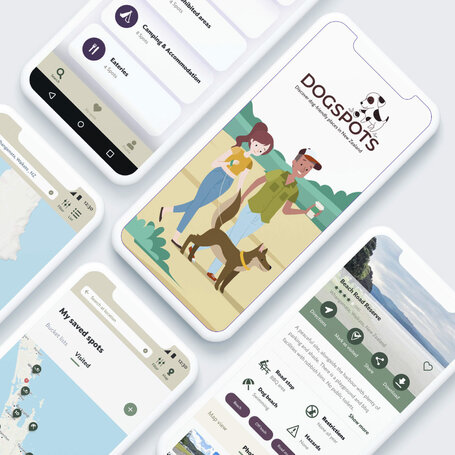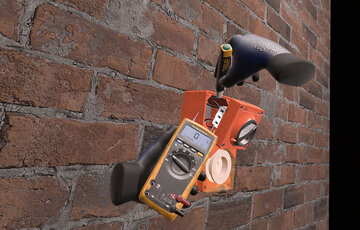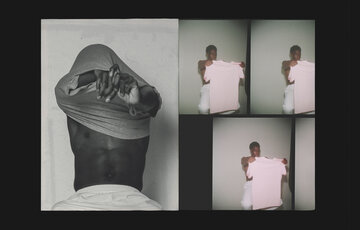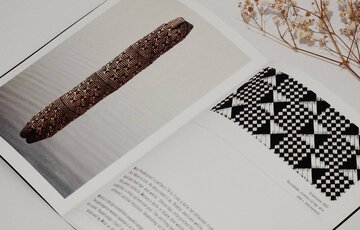What is the Postgraduate Diploma in Design
Create the impossible
The Media Design Graduate School empowers you to take steps that will change the world. Mix with the brightest, most passionate people. Develop systematical creative thinking and build design skills in an innovative fast-paced fun environment.
Work full time, and study on the weekends
This 30 week full-time programme only has weekend classes, and is for those with an undergraduate degree who wish to develop and update their strengths across the digital design spectrum. Develop analytical design thinking and build creative technological skills in an innovative environment.

Course Outline
What you'll cover in this course
To complete a Postgraduate Diploma in Design, you must complete any four of the following components:
If you have completed the Postgraduate Certificate in Design at Media Design School, then the 60 credits that you have already completed will be applied to the Postgraduate Diploma of Design, which means that you will only be required to complete an additional two components.
| Component Name | Credits | Toggle |
|---|---|---|
|
Design Research: Connecting Texts, Deciphering Context
|
30
|
|
|
Discover the ways different types of ‘texts’ (not just the written kind!) can be linked to understand the range of situations in which a designer operates. Research design by exploring these possible connections within the framework of a real-world project. Working in a replicated work environment on actual industry briefs will add a practical focus to your learning. You’ll gain relevant experience and build valuable professional portfolio skills and content.
Level 8
PGD001
This course will be offered in Trimester 1
|
||
|
Interdisciplinary Design Project: Emerging Contexts
|
30
|
|
|
In this component, you’ll gain skills in the analysis of research data for application in visual research and design. Here, emerging technologies across a range of design disciplines are used to study both people and cultural phenomena (such as target audiences). In turn, these tools are utilised to inform your design decisions. Because emphasis is placed on gaining understanding through making, you’ll use audio, visual and textual elements (and more!) in your designed communication responses to a real-world project.
Level 8
PGD002
This course will be offered in Trimester 1
|
||
|
Contemporary Design Issue: Creative Futures
|
30
|
|
|
A live brief is used to explore how design interventions can have profound and ongoing effects on the world - both intended and unintended. This component investigates the ways that designed things such as equipment, services, interfaces or environments shape environments, behaviours and attitudes. Drawing upon contemporary philosophies of technology and theories of practice, you’ll learn about the tools that are critical to design and that can richly engage with the complexity of living. You’ll gain a reflective awareness of the ways in which design can reconfigure ways to produce more considerate and sustainable products, services and approaches that benefit both people and the planet.
Level 8
PGD003
This course will be offered in Trimester 2
|
||
|
Special Topic Project: Creative Entrepreneurship
|
30
|
|
|
Step out of your comfort zone by crossing the boundaries of your known discipline to contribute to a real-world project that requires a fresh solution. This component explores the potential of design thinking as a generator of state-of-the-art and entrepreneurial strategies, practices and designed things through innovation challenges. This requires the application of both corporate and academic research in conjunction with savvy design methodology. You’ll work both independently and in a team to respond to a client’s requirements and you’ll need to consider the effect of your choices on outcomes throughout the process. Successful results will be risk-taking tactical and effective responses to the brief provided.
Level 8
PGD004
This course will be offered in Trimester 2
|
||
|
Special Topic Project: Design and Economies
|
30
|
|
|
Design is profoundly affected by the economy in which it is embedded. In this component you’ll take a real-world project brief and employ it to rethink assumptions about the unsustainable growth-based and unstable economies of the 21st Century. The outcome of this project is to survey critical approaches to an economy using design thinking to address such concerns as the implications of this economy for design; how more sustainable approaches to the economy might open new possibilities for design; and what role design might play in a transition to a different economic model.
Level 8
PGD005
This course will be offered in Trimester 3
|
||
|
Interdisciplinary Design Theories: Dialogues
|
30
|
|
|
When one type of design intersects with another, the result can be a more comprehensive solution than a singular, traditional approach might provide. Working in diverse teams of designers from a range of disciplines can build ground-breaking outcomes. This component will introduce you to texts, conversations and viewpoints drawn from assorted disciplinary contexts that are of relevance to design, including philosophy, sociology, anthropology, technology, history, and a range of media. Here, you’ll work in teams to engage with ideas that are (or have been) influential in shaping ways in which designers can ideate in order to unpack solutions to interdisciplinary real-world problems.
Level 8
PGD006
This course will be offered in Trimester 3
|
||
Careers & Industry
Career Pathways
Possible career pathways for graduates of the Postgraduate Diploma in Design include both strategic and design positions within design studios, companies and consultancy agencies:
Design Project Manager; Systems Designer; Merchandising and Branding Developer or Strategist; Sustainability Designer; Interactive Designer; Mobile Technologies Designer; User Experience Designer; Design Analyst; Screen Designer; Digital Animator; Information Designer; Product Designer and Developer; Service Designer; Transmedia Designer; Packaging Designer; Secondary Design Teacher; Design Consultant; Design Manager.
Course Requirements
Qualifications you'll need for this course
To ensure optimal peer-to-peer learning, Media Design School determines each Postgraduate Design cohort by carefully managing the participant mix. Postgraduate Design participants typically have 6 plus years of professional experience, are recognised as having significant potential. Most applicants have a high degree of specific design knowledge. Others come from diverse backgrounds but have a strong interest in how Design can be applied to their specific field and interests.
We’re open to unusual applications and backgrounds!
In order to be admitted to the Postgraduate Diploma in Design an applicant must have completed the following or equivalent:
- A New Zealand Bachelor's degree that is of relevance to design (such as Design - Graphic,Industrial, Product, Fine Arts, Cognitive Science/Psychology, Software Engineering. Computer Science, Computer Engineering).
- An appropriate international equivalent design or allied professional qualification requiring. at least three years full-time tertiary study at an appropriate level as approved by the Academic Board
In order to be admitted to the Postgraduate Diploma in Design with advanced standing, an applicant must have completed the Postgraduate Certificate in Design.
Media Design School requires the following items for an application to be considered:
- Completed application form online
- Statement of intent
- Curriculum Vitae
- Digital Portfolio of relevant work from area(s) of expertise
- Two letters of recommendation
- Official undergraduate and graduate transcripts and qualification certificate
Applicants are required to attend a selection interview (in person or via video call). Eligibility for admission does not guarantee an offer of a place.
As an international student, you'll need to prove you have sufficient English language skills in order to complete this course. We'll be looking for Academic IELTS overall score of 6.5 (minimum) with no band less than 6.0, successful completion of LANGUAGECERT Academic test with a minimum score of 70 overall and no skill below 65, or equivalent test result.
Students from Denmark, Finland, Germany, the Netherlands, Norway, and Sweden will be able to meet language requirements through their academic transcripts- no need to provide IELTS or official certificates.
We accept a range of internationally recognised English Language proficiency test. Find out more on the NZQA website or download the NZQA list HERE.
Evidence of Creative Abilities
Applicants are required to submit creative portfolios in addition to their previous academic history.
The creative portfolio is a showcase of your previous design and creative works. It is very much like a visual resume. The aim of the portfolio is to showcase the breadth and depth of your skills, knowledge and experiences in design. It should highlight key projects you have worked on illustrating both the thinking and design processes and the final outcome.
Portfolios must show an applicant’s creative potential and ability. All applicants must submit a portfolio of representative samples even if they have not had formal training in art and design. A good portfolio may contain a variety of work; sketches, drawings, painting mixed media, multimedia, photography, design creations etc.
Portfolio Format:
In most cases the portfolio should be submitted as a single PDF file, with no more than 40 pages. If applicants wish to submit multimedia, animations, games or movies, ideally these are listed on a websites for viewing.
Please consider the following:
- Only submit work done within the last three years.
- Include an introductory slide with your name and contact details
- Where possible, provide a description of each project and your response to the project brief.
- Show your ability to meet technical and software skills relevant to your chosen discipline.
- Send an electronic copy of your portfolio – no original submissions will be returned.
Before you begin your study with us, you will need to have a suitable device that has the functionality to run the programmes required for your course.
Click the link below to find course-specific requirements and recommendations, along with links to more information about hardware specifications. We have prepared these recommendations to help our students equip for flexible, blended learning.










